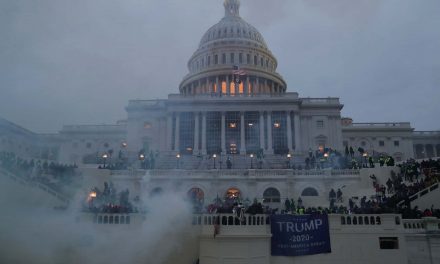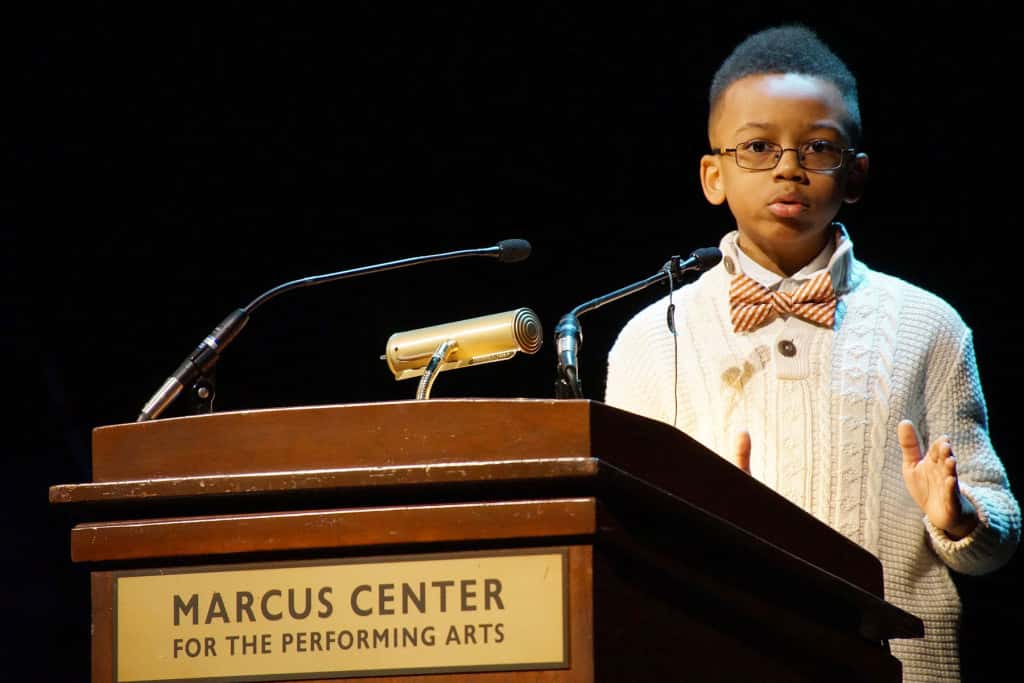
Common Sense: the ability to use good judgment in making decisions and to live in a reasonable and safe way.
As Americans we take pride in being very sensible people and think that most of us are in the same boat as everyone else when it comes to common sense. Those lacking common sense are see, as oddballs. I have proposed for years that common sense is not very common.
My contention is that we make many decisions based on our sense of belonging to a specific group. We try our best to do what benefits the group we have allegiance to, even if those decisions make little sense. In America, belonging to a specifically defined racial group has always had consequences.
For the past 411 years, since the first British colonists arrived in Jamestown, those original settlers have been described as the founders of the New World. We all learned in history class that these settlers made the sacrifices that allowed this Republic to be founded as a nation independent of the British crown.
We have been taught a specific mythology about those forefathers. All Americans were taught in school the myth that the British settlers established “civilization” in a place where it did not exist before. We ignore the fact that the indigenous people of the land invaded by those colonists had well-established civilized societies, which helped the early settler survive in a harsh new environment. The myth is a part of the story of America.
The Jamestown colonists never referred to themselves as white in any of the primary documents historians have analyzed. They referred to themselves as Christians. The concept of whiteness had not been created yet. The current idea of race had not been created yet. The concept of race at that time was more aligned with what we would now call ethnicity. As the idea of race developed in America, it was because of a battle over who could legally be enslaved.
The legislators of Massachusetts in 1641 wrote the first law formally establishing legalized slavery in the British colonies. The institution had existed since the first enslaved Africans arrived with the Dutch and French colonists many years before. The British continued to enslave Africans and Indigenous people without a formal declaration in their laws. We are told that the first Africans who arrived on a Dutch slaving vessel were indentured servants. None of the Africans came voluntarily, nor did they sign a contract of indenture prior to leaving Africa, yet we are told they were indentured servants.
Other colonies soon followed the lead of Massachusetts establishing legalized slavery. Slavery would become a part of the basic fabric of the first republic on the shores of North America. But much more importantly, slavery became a race-based institution with Africans and Indigenous people being the only people legally enslaved in America. The new nation created a racial caste system with long lasting implications.
As different European immigrants came from the British Isles, Scandinavia, the Germanic societies, France, Belgium, Russia and many other places they would be defined by their ethnic identity when they arrived in America. Eventually they would all be called white people. Those of us with African ancestry would be called Negro, the Spanish word for black. Just as the Europeans came from very diverse societies, so did those from Africa. Hundreds of tribal groups from Europe would be lumped together as one so-called race in the same way that hundreds of tribal groups from Africa would be as well. We have grown to accept these titles as real. We have grown to accept ownership of these titles.
By owning these titles and labels we acknowledge their realness. Every ten years, beginning in 1790, the nation has completed a census of population. Racial categories on the decennial census have changed drastically over the years for those of African ancestry, Native indigenous populations, and those from Asia and Latin America. One label has been consistent across the years. Whites have always been white on the census. Those of African descent have been, Negro, Colored, Mulatto, African American and several other names. We seem to have trouble figuring out what to call those not in the white category. We even have trouble deciding who belongs in the white category.
Race has been, and continues to be, a source of consternation in our country more so than in most other places. Brazil and South Africa in similar ways have grappled with race categories throughout the years as well. However, our racial issues have had much bigger impacts than either of those nations. Contrary to what most of us believe about Apartheid in South Africa, it was only created in 1948 and dismantled in the early 1990s. The system did not even last fifty years. Segregation was at the heart of racial policies in South Africa. Likewise it was an important part of the establishment of racial policies on these shores.
Some of us learned in school about Jim Crow segregation in America. This period of rapidly expanding policies and laws relegating non-whites to separate spaces after the Civil War ended, and extending into the 1960s, is what most of us see as American segregation. I believe it started much sooner.
Laws creating slavery were segregation policies. Separating who could and could not be enslaved based on artificially defined racial categories created the first important segregation. It did not create segregated spaces, it instead created segregated mindsets. Indigenous people as well as Africans were denied full access to Americas
Whites were led to believe that they were the superior stock in America, in contrast to people of color being seen as the inferior stock. This worldview became the way Americans saw each other and is still stuck in the minds of many today. That belief system has colored the way we see the world around us. Based on the basic assumption that this was the correct interpretation of our racial caste system, policies were created to engrain this into the fabric of every institution in the country.
We have been taught to believe that the standards of white America apply to all of us. These became the standards by which all others have been measured, literally and figuratively. What is beautiful and what is not is based on how whites define beautiful. The curly hair of Africans and their brethren has been defined as “bad.” We have been led to believe that our lips are too thick, our noses are too broad, and that our women’s butts are too big. African ancestored women have tried for decades to live up to the standards of white women. They spend untold millions on hair products to straighten their hair so that it approximates the hair of white women. I see black women with blonde hair on a nearly daily basis. These are the standards of beauty we have all been led to believe in.
Malcolm X asked many years ago, “who made you hate the way you look?” The simple answer is: America has. Just as it made Indigenous groups believe their spiritual belief systems were illegitimate. It has likewise made Asians feel that something is wrong with the shape of their eyes. America has taught people who speak Spanish as a first language that they need to learn to speak “American,” as some have so derisively shouted to Latinx people.
We are socialized into seeing the world from the perspectives of white people our entire lives. We are immersed in what Professor Joe Feagin calls the “White Racial Frame.”
This frame of reference normalizes everything white as being the standard to judge everything else by. Non-whites are called “People of Color” as if somehow white is no longer a color. The defensive wars fought by indigenous people against whites who attacked them and eventually took all of their land, displacing them onto “reservations” are called Indian Wars instead of White Wars. Whites were the antagonists in these wars yet we have been taught that they were protecting themselves from so-called “savages.”
We eat, breathe, and bathe in the White Racial Frame. As a result we make decisions based on this worldview. All major institutions in America have developed and evolved within the confines of this ideology. Whites have fought hard to maintain the privileges that the system has provided them. We can see clear evidence of this within business practices, our educational system, crime and punishment, and most importantly within our political system.
The Constitution was ratified in 1787, becoming the supreme law of the nation. Embedded within that document were racial protections for institutions whites created and favored. The most important of these institutions was race-based enslavement of millions of Africans and Indigenous peoples. In all of the civics classes we took in school this simple but important concept was left out of the conversation. The Constitution written by a group of men who gave themselves the ability to legally own other human beings is still the law of the land. We have amended the document but have never removed the parts that supported the institution of racial enslavement.
The word slave first appears in the Constitution in December 1865 with the passage of the Thirteenth Amendment. The Founding fathers were ashamed of placing the words slave and slavery in the document establishing the foundational rules of a nation founded on “liberty and justice for all.” Therefore, they found creative ways to describe the Africans they held in captive bondage. They were referred to as “other persons.” Enslaved Indigenous people were called Indians.
How does this relate to common sense? I believe strongly that whites have protected the things that they believe benefit them, even when those things obviously hurt them. Our political system is as polarized as it has been since the years leading up to the Civil War. The disconnect between the only two parties that really have power, the Democratic party and the Republican party, along racial lines is clear to see.
Few blacks will openly admit to being Republicans. There are obviously some who do. The 2016 Presidential election results show that some blacks voted for Donald Trump. Studies have shown that there were also a significant number of whites that professed to be Democrats in previous elections yet voted for Republican candidate Donald Trump. Counties that supported Democrat Barack Obama in 2008 and 2012 yet switched to Donald Trump in 2016 are known as Pivot Counties. Twenty-three of the seventy counties in Wisconsin are Pivot Counties. One of every nine Pivot Counties in the country was in Wisconsin.
The initial theories of why these whites voted for Trump argued that they were concerned about the state of the economy and how they were being shut-out and marginalized as whites. At that time, it was easy to believe this theory. However, numerous subsequent studies have shown this theory to be unsubstantiated. What the evidence tells us is that for many whites who voted for Donald Trump it was about race. They voted for the candidate who articulated the idea of “Making America Great Again” (MAGA). The numerous MAGA hats seen at rallies around the country tell us that many whites wholeheartedly believe that somehow America is not what it once was.
The implication in 2016 was that somehow eight years of President Obama had made America something less than great. The language used to describe the presidency of Barack Obama by Donald Trump, many years before his campaign for that office, are clarifying. Donald Trump led the “hoax” that became the “birther” controversy, falsely stating that Obama was not born in America. Many Republicans still believe this to be the case. Donald Trump has used racist language to describe non-whites, inflaming people of those communities. He has been bold enough to claim Mexicans are criminals and rapists.
“They are not our friend believe me. When Mexico sends its people, they’re not sending their best. They’re not sending you. They’re not sending you. They’re sending people that have lots of problems, and they’re bringing those problems with us. They’re bringing drugs. They’re bringing crime. They’re rapists. And some, I assume are good people.” – Donald Trump
He has fought incessantly to build a wall along the US-Mexico border by tweeting things like this:
“I want nothing to do with Mexico other than to build an impenetrable WALL and stop them from ripping off U.S.” – Donald Trump
He has also referred to non-European countries as Sh#th*le countries. His message is loud and clear. He is pandering to good old fashioned American racism. When he attacks Obamacare, whites who are receiving healthcare under that system, still support him. How will they feel if they lose their healthcare benefits? This is a classic example of whites supporting something that clearly is not in their best interests. Likewise his sweeping tariffs against Mexico and China are couched in color-coded language and supported by many white Republicans, despite the fact that these policies are causing American businesses to struggle and is leading to the loss of American jobs.
It is for this reason that I argue that “Race Trumps Common Sense”, pun intended. Whites, who support Trump, support a person who obviously has made numerous racist remarks before and after becoming president. Many of his supporters do not care that he has referred to Neo-Nazi, White Supremacist as “good people.” Those citizens who do not recognize this reality are in for a harsh wakeup call at some point.
Back in the 1930s when Congress created the Social Security and Unemployment Insurance programs, another example of whites supporting something that was detrimental to them happened. Each of these programs deliberately excluded domestic workers and farm workers until the policies were changed in 1952. In their haste to exclude black people, a large number of white people were denied these benefits throughout the South. Those people did not really care all that much. Those whites who supported the exclusion saw the white victims as “casualties of war.”
What war? The race war that was pitting the federal, state, and local governments against non-whites. The federal government helped to create a system that supported, not just segregated communities, but much more importantly all-white communities. These “exclusive-tracts” created around the country, insulated white people from what the federal government called on redlining maps “inharmonious racial groups.”
The segregation we see today is the remnants of a system created and supported legally for decades. Denying “inharmonious racial groups” the right to live where they wanted has had long-term detrimental impacts on the people deemed unacceptable. Likewise, it provided a lifetime of benefits to those defined as whites.
Wars do not always look like they do in the movies. We have fought a bloodless “War on Cancer” as well as a “War on Poverty” without shedding blood. The race war has been a consistent war that has gone sight unseen for far too many. As people of color have fought back, we have been seen as the enemy, someone to be afraid of.
The current fear that white people have, yet rarely articulate, is that of becoming a numerical minority in America. Current trends show that by the 2040s they will be a minority of the population in this country. The current debate about immigration is a reflection of this fear. It is no different than the fear during the 1920s, based on the large numbers of Southern and Eastern Europeans arriving in the country – many of them Jews, that led to the strict Immigration Act of 1924.
Until we recognize the need for some white people to protect what they have at the expense of people of color, we will not truly understand the current occupant of the White House and his appeal to so many millions of white people.














